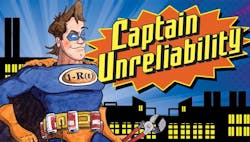Why firing factory workers is the new innovation strategy
Key takeaways
- Who needs products or output when you can save money by firing the only people who actually know how anything works?
- Productivity may drop, but at least we’ve got twelve VPs aligning synergy with strategic vision in every meeting.
- Why train managers to lead when we can just stack more execs with buzzword fluency and zero plant-floor experience?
- Every chaotic reorg is just another chance to blame the understaffed crew for not understanding our latest 12-step strategy shift.
In the world of modern business, only one strategy reigns supreme when times get tough: cut the people who actually do the work.
Forget the hardworking folks on the ground floor who manufacture the products, deliver the services, and generate the revenue that keeps the lights on. Let’s slash their ranks! Because, clearly, if a company is struggling, it can’t possibly be due to a lack of direction from the top. No, no, it’s those pesky frontline employees holding us back with their “hands-on” contributions to productivity and revenue.
Frontline workers? More like budget line items
Now, before you go gasping about “logic” or “common sense,” let’s clarify that there’s a method to this madness. You see, having more managers, directors, and VPs in the hierarchy is essential. After all, what good is a company without layers of decision-makers to come up with the kind of high-level strategies that can only be conceived far, far away from the daily grind? And while these executives may not know how the machinery operates or the service is delivered, they’re adept at what truly matters—strategic vision (preferably in buzzwords).
Let’s talk numbers here. When you cut one factory worker or service technician, sure, you might lose a bit of output or delay a project. But when you add another Vice President of Visioning Synergy or a Senior Director of Future Growth Potential, what you gain is priceless. How else would we spend the entire day crafting 10-page memos, building PowerPoint decks, and holding meetings to discuss the next meeting? This is high-impact work that you simply can’t put a price on.
Some might argue, “But what about productivity?” Well, that’s the beauty of this approach: if anything goes wrong, there are plenty of employees left in the lower ranks to blame. If profits tank or projects fall behind, we can point fingers at the very people who are left to carry an increasing workload with fewer hands. After all, we’ve invested in a Director of Blame Allocation for a reason.
And don’t worry about morale, either. There’s no better motivator than a “streamlined” workforce. By cutting staff at the ground level, we can actually increase employee engagement. Just think of how engaged they’ll be when they’re doing the work of three people. And for any minor dips in morale, we’ve got a Chief Happiness Officer whose primary job is to remind the remaining employees that they’re “lucky to have a job at all.” Nothing says gratitude like doubling the workload and halving the team.
Leadership by ladder: The higher you go, the less you know
Now, let’s address the elephant in the room—leadership. Some critics claim that instead of hiring more executives to make up for our leadership gap, we should invest in developing the skills of our existing managers. But who has time for that? Leadership development is costly and time-consuming. Why train our current leaders to actually understand the operations or empathize with the front-line workers when we can simply add another layer of management to handle “strategic oversight”? This way, we can achieve the illusion of leadership without all the bothersome empathy or connection to reality.
And think of the ripple effect. By bolstering the upper echelons, we can implement a cascade of new processes and policies that the actual workers will have to figure out on their own. A constant state of change keeps the workforce on their toes, constantly adapting to the latest reorganization. This, of course, creates more inefficiency, which justifies another wave of cuts at the bottom. It’s the corporate circle of life.
Some might call this approach “unsustainable” or “short-sighted,” but we call it “smart business.” Because, in the end, the true goal of any company isn’t profitability or productivity; it’s looking as complex and hierarchical as possible. When future investors or buyers peek under the hood, they’ll see layers upon layers of VP titles, and they’ll know—this is a company with vision.
And who knows? Once we’ve finally eliminated the last of those pesky employees who are actually doing the work, maybe we can achieve our ultimate corporate dream: an organization of managers managing managers, reporting to executives who answer only to other executives, in a streamlined, productivity-free paradise.
About the Author
Captain Unreliability
Captain Unreliability is a satire of the state of the manufacturing industry in ’Merica today and is written by an industry professional known for using humor to get the point across. Stay tuned for more useless advice, and if you have topics you’d like to see covered or questions you’d like The Captain to weigh in on, contact The Captain directly at [email protected] or follow on Twitter @CUnreliability. Also, consider becoming Unreliable today by getting your Captain t-shirt at https://reliabilityx.com/product-category/gear.
